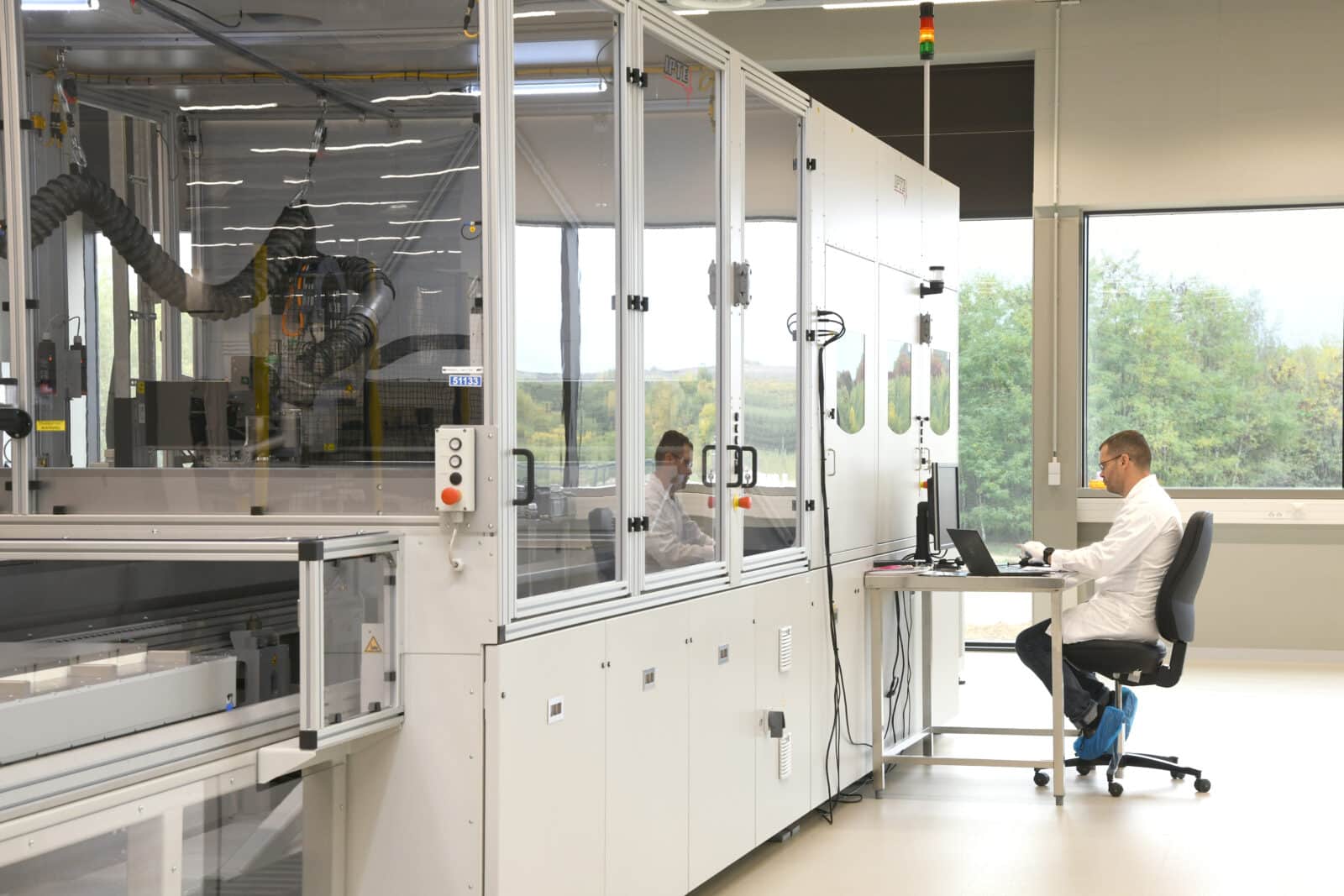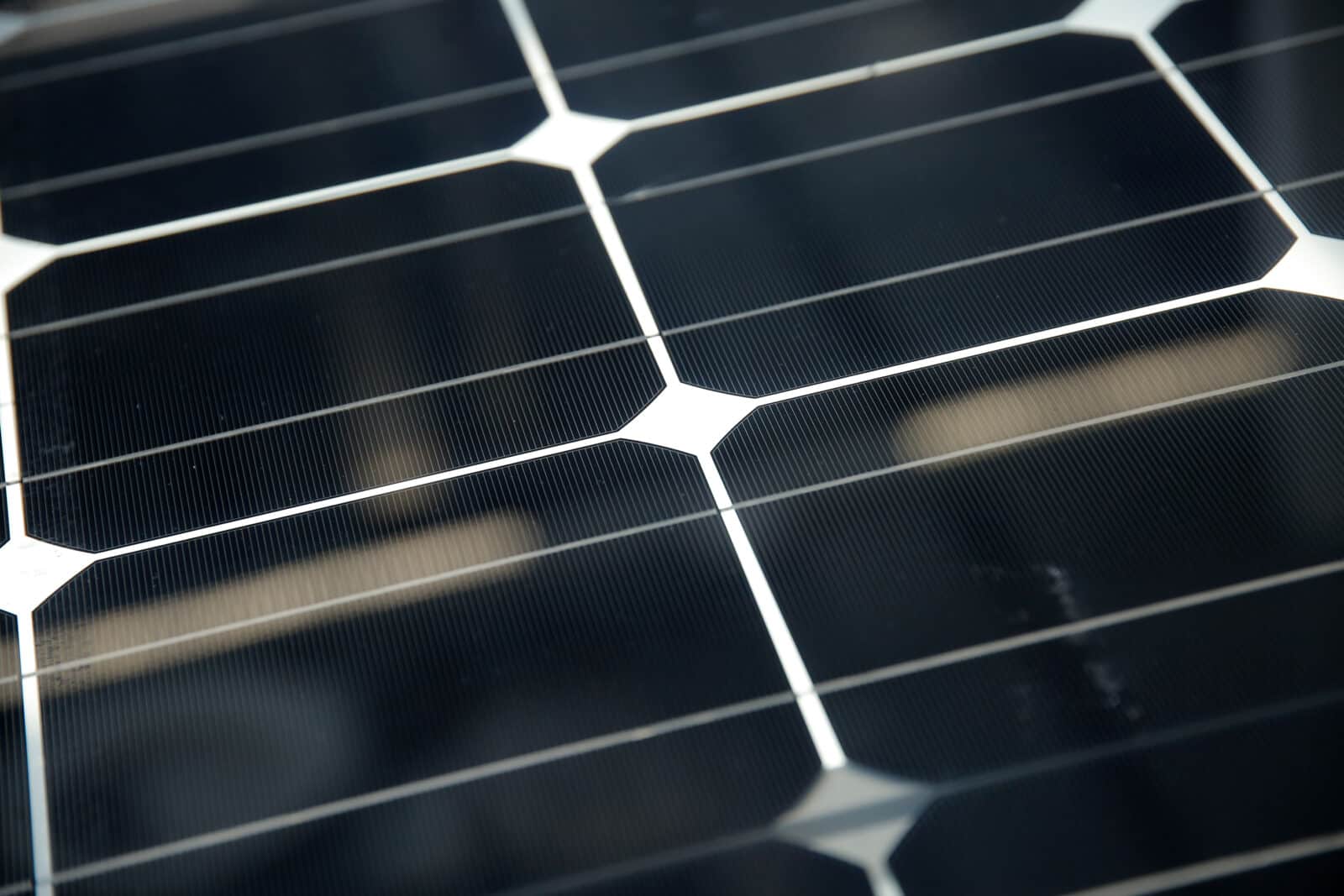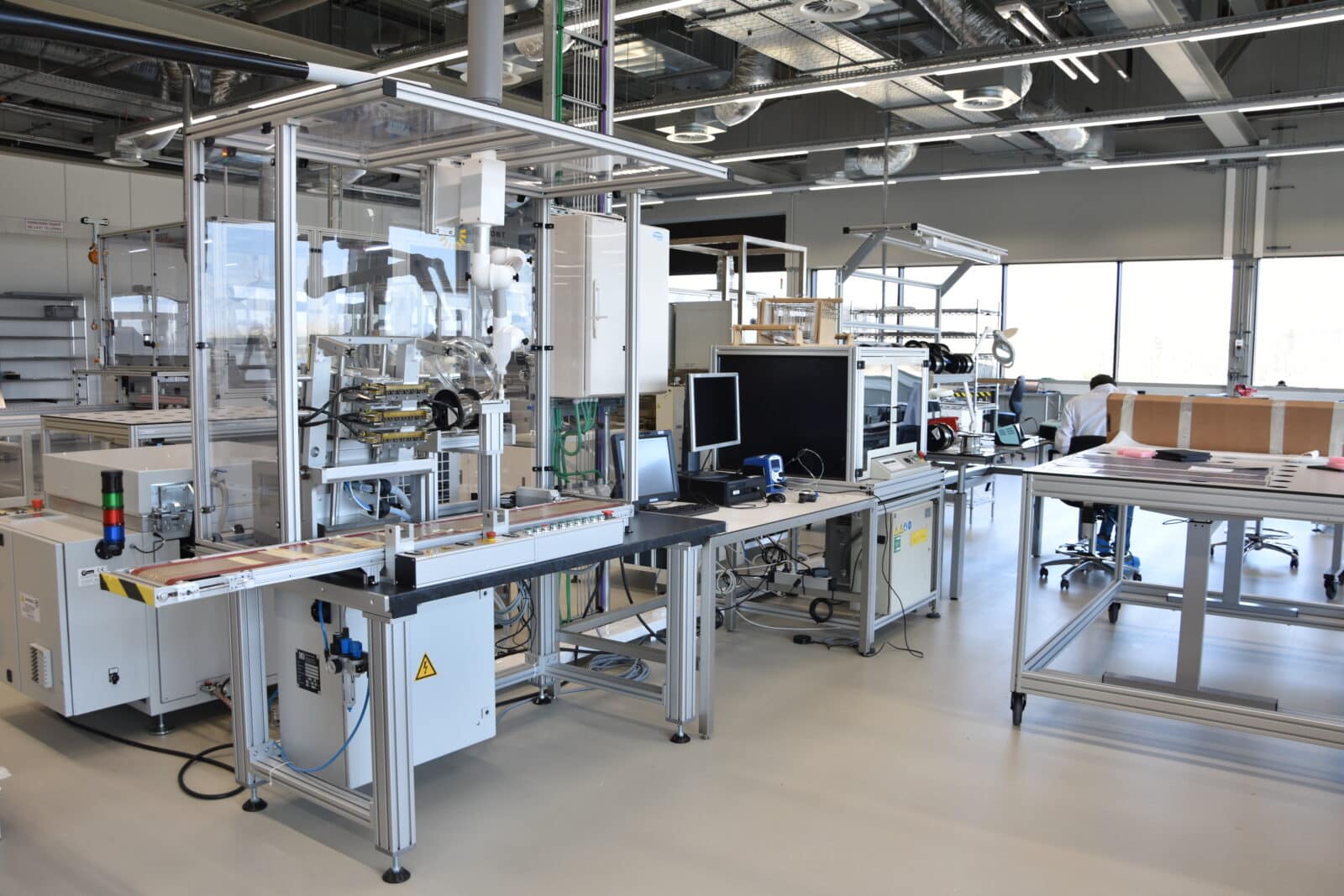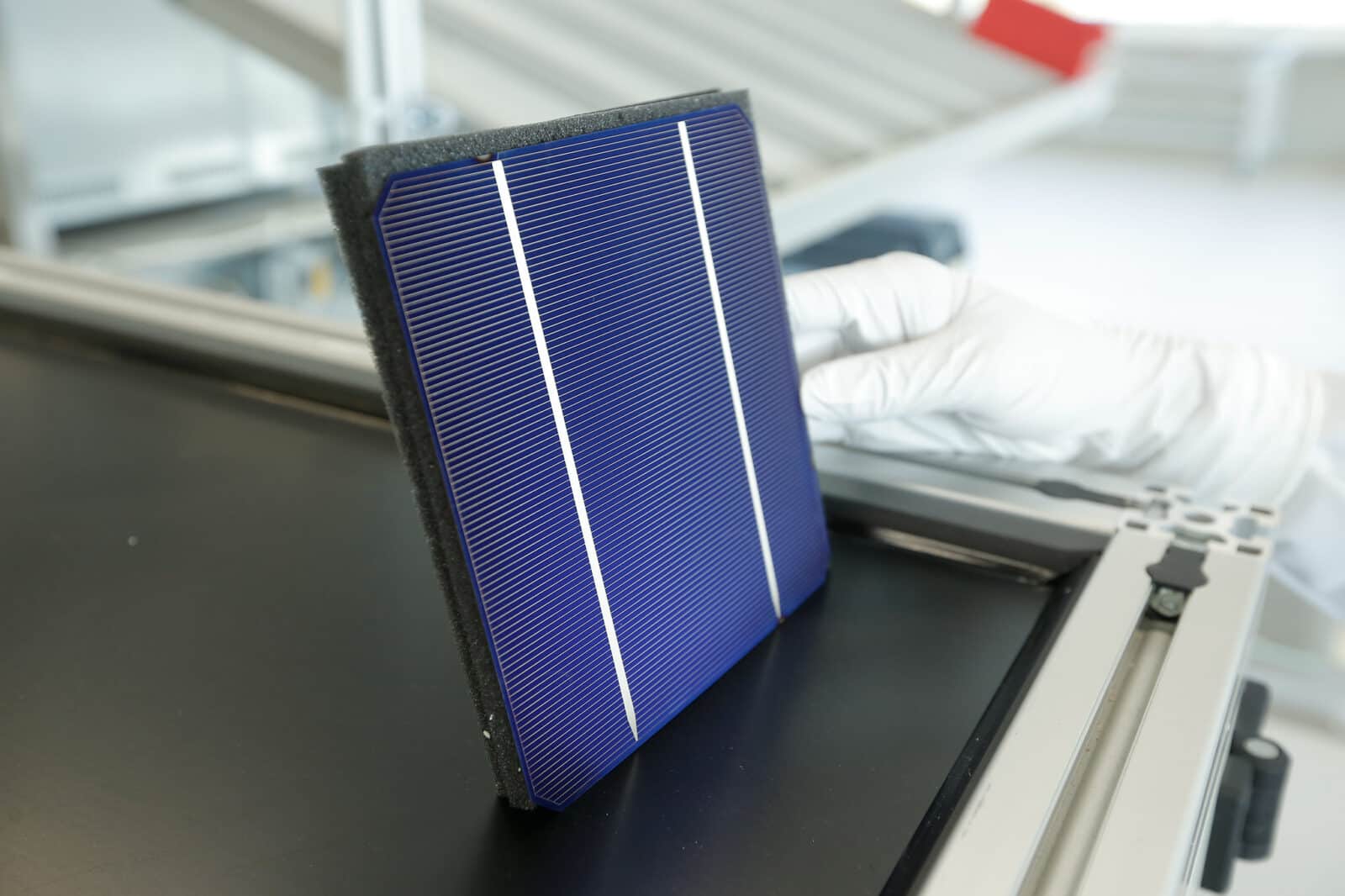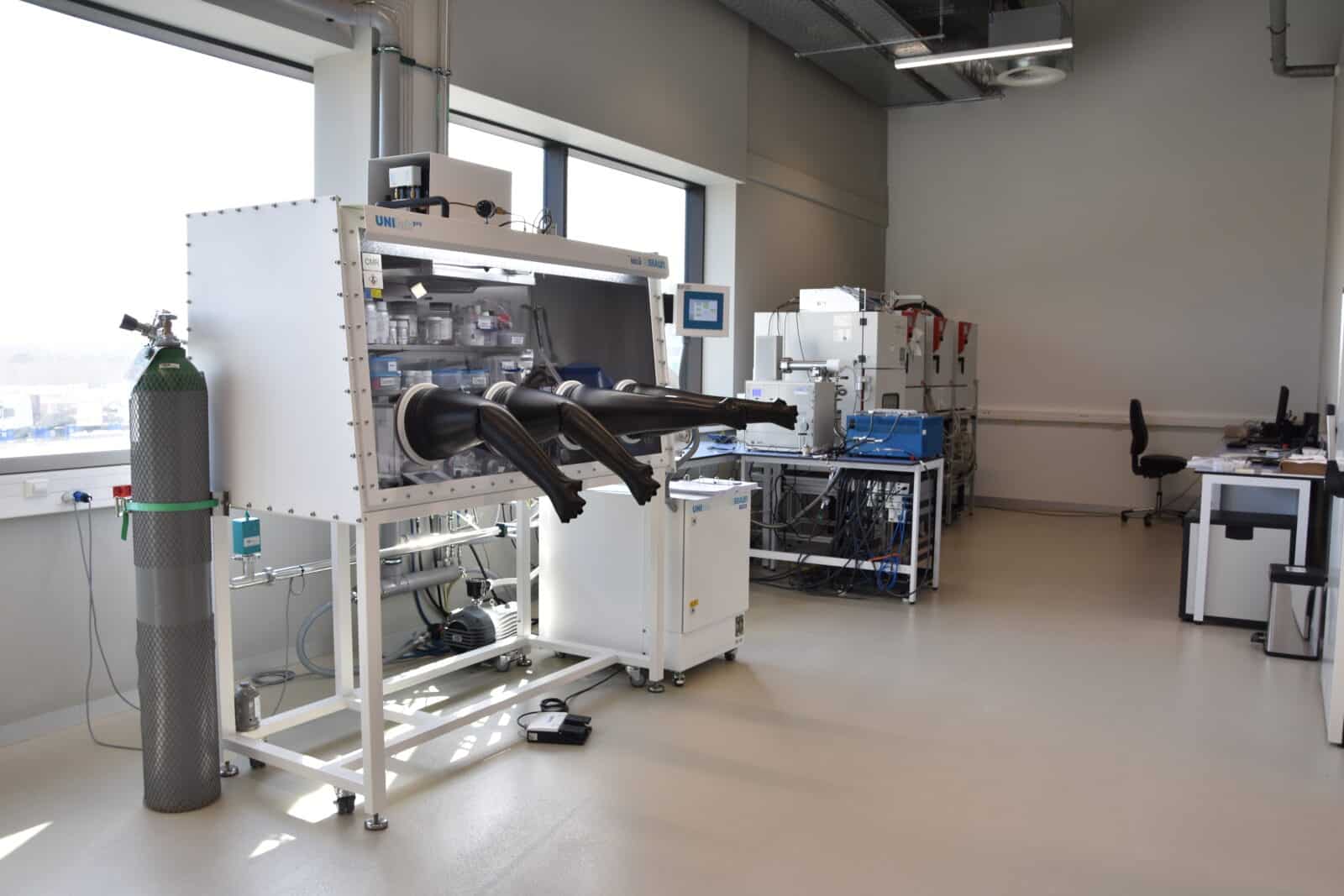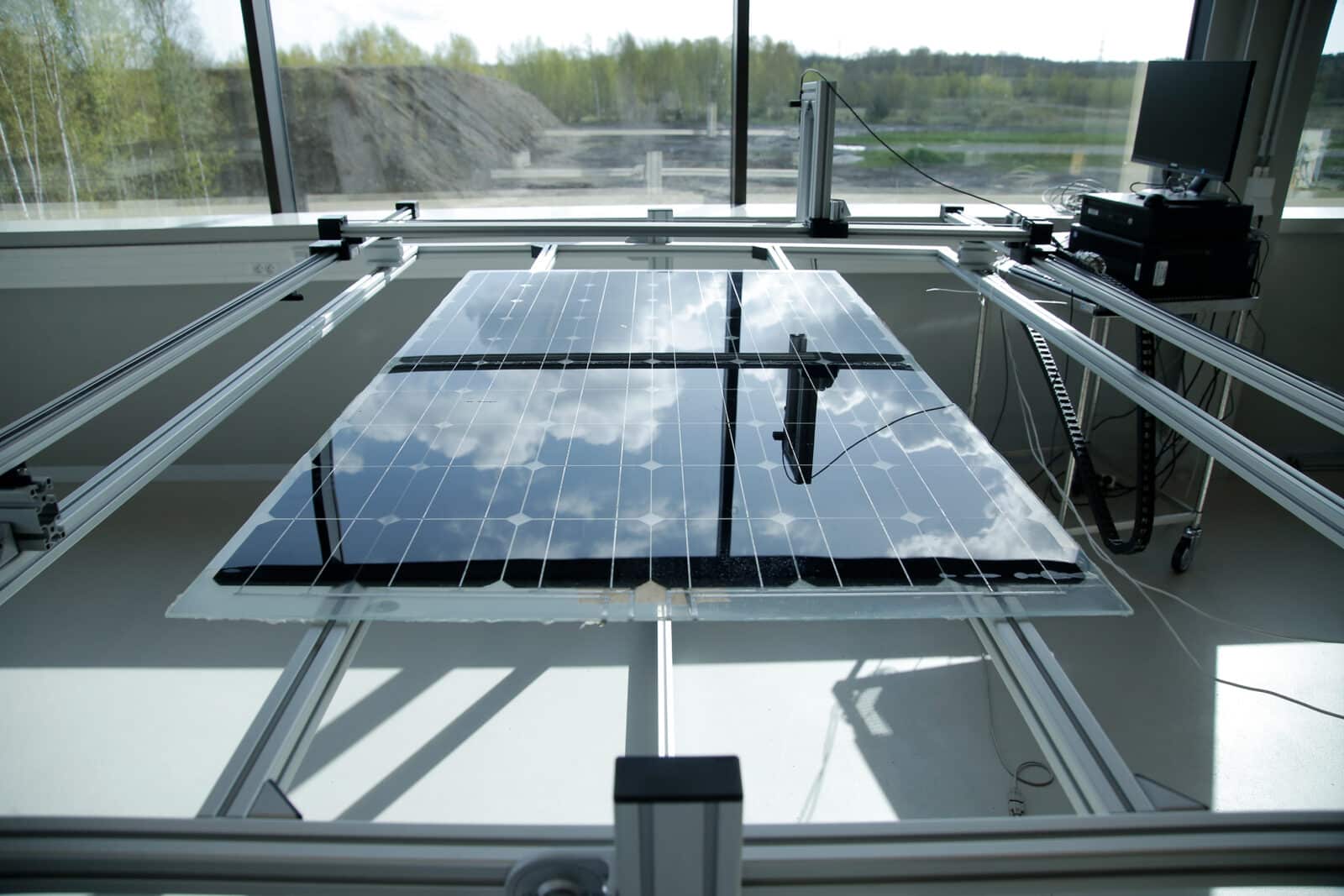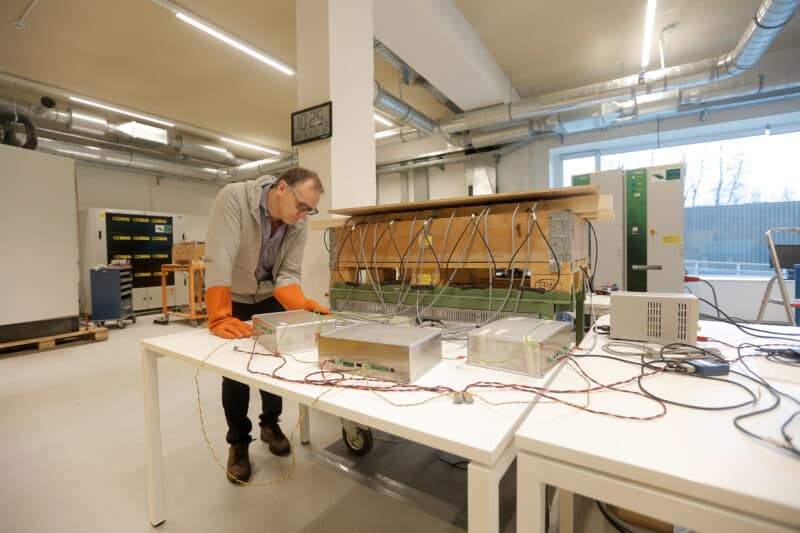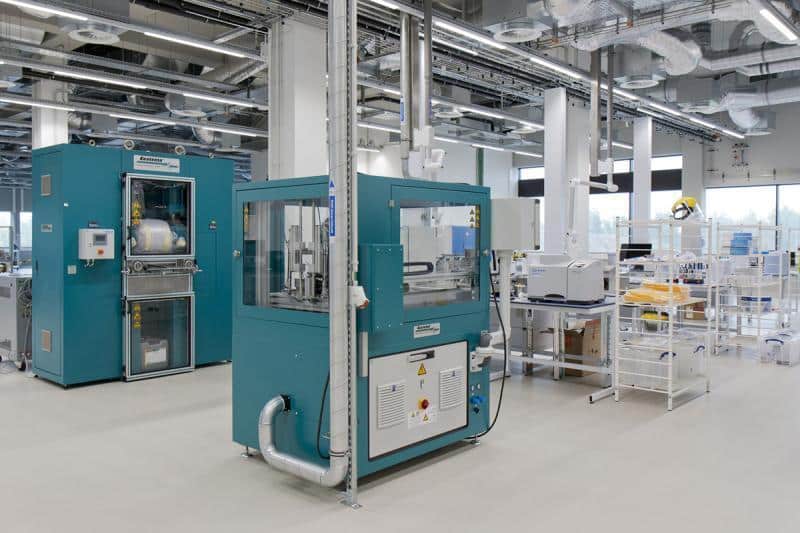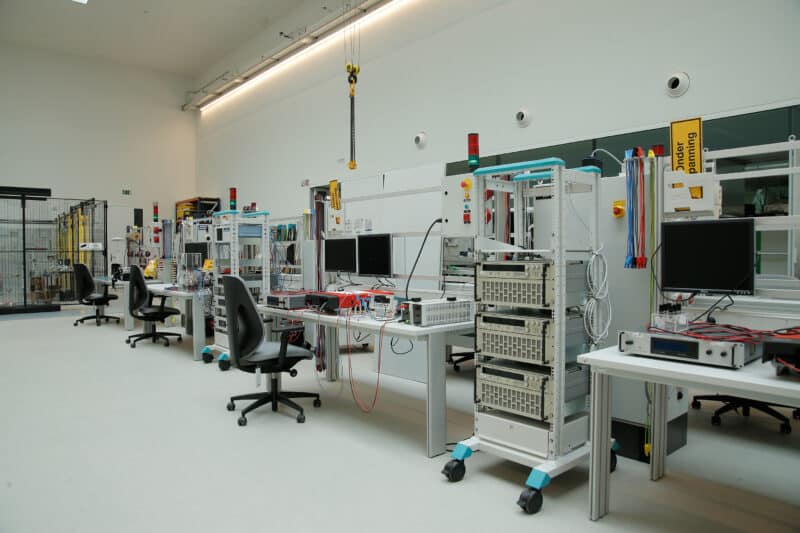Looking for information about using this lab?
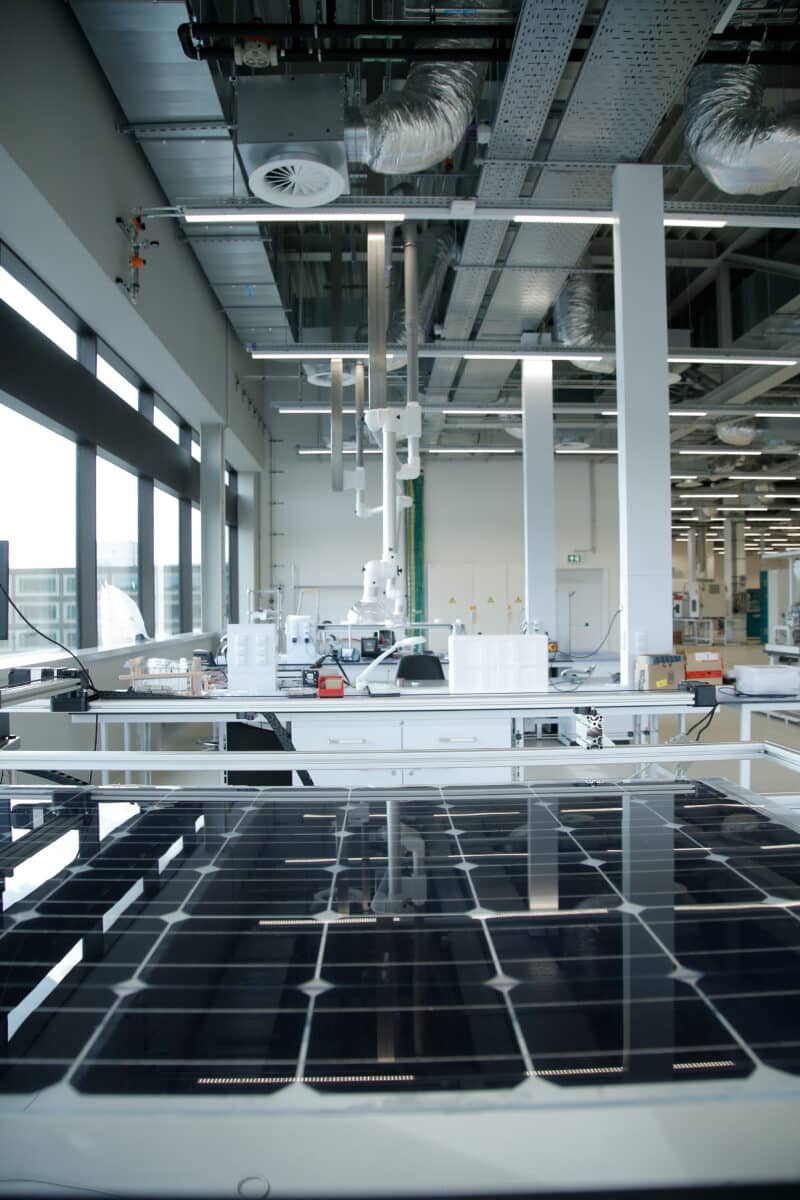
Photovoltic Module Lab
The PV Module Lab infrastructure is designed for fabrication and characterization of PV modules with equipment that is state-of-the-art and/or beyond. As such, it is well-suited to evaluate and process both standard and new materials in the PV module value chain: cells, interconnect structures, encapsulants, backsheets and glass. Additionally, the versatility of the equipment allows for standard flat commodity PV as well as early-stage development of new interconnection and encapsulation technologies in an exploratory phase, while the same tools simultaneously accommodate scaling up to full-size panels (1m x 1.6m).
Advantages
Additional to the availability of advanced tools, the infrastructure is operated by experienced engineers and researchers for the development of next-generation PV module and interconnection technologies. The team members have an extensive background in PV materials, concept definition and proof, industrial (best) practices for standard and BIPV fabrication, characterisation and reliability, as well as in-depth knowledge of detailed solar cell (optical, electrical and thermal) behaviour and how this behaviour is translated into modules and systems (both in theory and in a practical implementation). In this way, we can carry out new technology development and offer objective technology advice taking into account the overall perspective as well as the slightest details.
Walk through this lab
Target Audiences
For whom is this lab interesting?
- PV cell and module manufacturers
- Material suppliers
- Equipment vendors
- PV system builders and operators
What can you use the lab for?
Processing designed for the fabrication of wafer-based crystalline-Si PV modules (or similarly applied in thin-film or an even broader technology context):
- Laser processing
- Placement
- Dispensing
- Soldering
- Lamination
In-depth testing of the optoelectronic performance of devices (fabricated in our labs or elsewhere):
- Optical inspection
- Light IV
- Dynamic illumination
- Electroluminescence (EL)
- External quantum efficiency (EQE)
- Reflection (R)
- (Cross-section) scanning electron microscopy (SEM)
- SunsVoc (dependency of Voc on irradiance intensity)
- Thermal and spectral dependencies in behaviour
- Pull testing
Most of the equipment offers the opportunity of automation for its designated processing/testing, though the loading and unloading (and in some cases mechanical movement) are done manually to ensure the highest versatility in operation. Manualpreparations, rework and inspection can be done offline with state-of-the-art lab tables and tools. Dry room storage (0.4%RH) is available for moisture sensitive materials (e.g. encapsulants).
